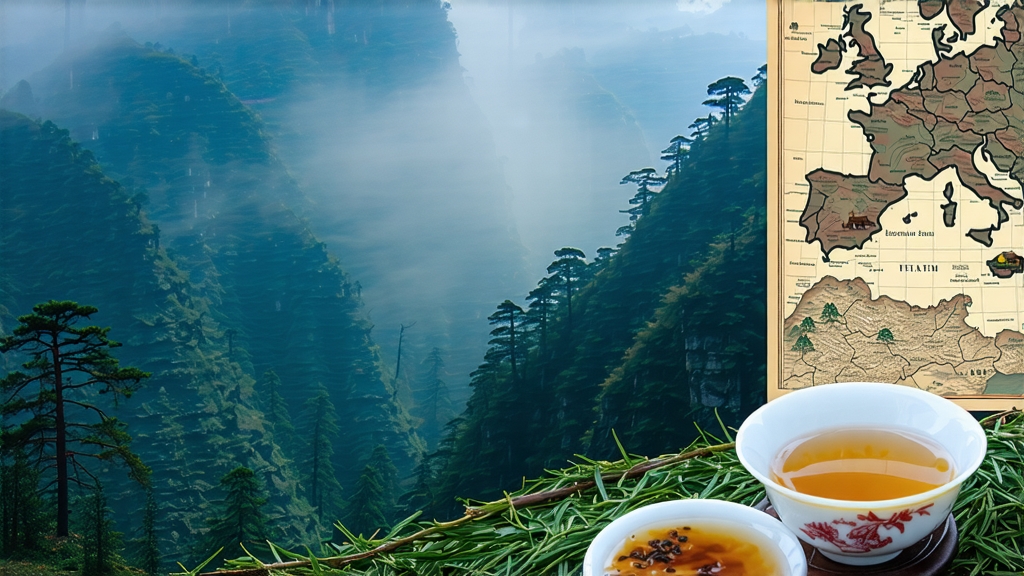
Ask most Western drinkers to name a Chinese black tea and they will probably say “English Breakfast.” Few realize that the coppery malty cup they love is built on the shoulders of a tiny, rugged leaf born in the granite gorges of northern Fujian: Lapsang Souchong. Revered in China as Zheng Shan Xiao Zhong, this is the primal black tea—the first ever crafted, the first ever shipped to London, and still the only one whose perfume of pine smoke and longan fruit can transport a sipper to a crackling campfire in the Wuyi Mountains within seconds.
Historical Roots: From Ming-Era Mist to London Coffeehouses
Legend places the birth of Lapsang Souchong in 1568, late Ming dynasty, when a passing army commandeered Tongmu village and delayed the spring tea harvest. To save the oxidizing leaves, farmers rushed them over burning pine boughs, inadvertently creating a wholly new aroma. Whatever the truth, by 1604 Dutch traders had carried the tea to Europe, where it was christened “Bohea” (from the local Wuyi dialect “Wu-i”) and quickly eclipsed green teas at auction. When Catherine of Braganza served it to the English court in 1662, the fashion for smoky black tea ignited; Boston’s 1773 rebellion even tossed Bohea into the harbor. Thus a humble Fujian leaf helped shape global trade, tax policy, and morning ritual from Edinburgh to New Amsterdam.
Terroir: Why Only Tongmu Can Birth the Original
Authentic Zheng Shan Xiao Zhong must be grown inside the 600-m-deep fault valley of Tongmu Guan, a protected core zone of the Wuyi UNESCO World Heritage site. Here a micro-climate of 80 % humidity, 120 foggy days per year, and昼夜温差 (day-night temperature swing) of 10 °C forces the tea bush to thicken its cell walls, concentrating aromatic compounds. Granitic, highly porous soil drains quickly, stressing roots and driving sap toward the tender buds. Four indigenous cultivars—Xiao Ye Zhong, Cai Cha, Mi Xiang, and the newly selected Wuyi Qizhong 105—thrive on these slopes, each contributing subtle differences: Mi Xiang adds a natural honey note, while Cai Cha leans toward peppery spice.
Two Families: Smoked vs. Unsmoked
International markets know only the smoky version, yet connoisseurs prize the unsmoked “Zheng Shan” even more. After withering, both styles undergo identical rolling, enzymatic oxidation, and firing; they diverge at the final drying stage. For traditional Lapsang, artisans lay the oxidized leaves on multi-tiered bamboo trays suspended over a pinewood fire pit. The fire is fed only with local Masson pine and a little cypress; resin-rich heartwood is avoided to prevent bitterness. Temperature hovers at 80 °C for two hours, then 60 °C for another six, allowing smoke phenols to bond with leaf sugars. The result is a glossy, dark-chocolate leaf that smells like cured bacon and pine sap. The unsmoked sibling is instead baked above a charcoal channel lined with Ma bamboo ash, yielding a liquor reminiscent of roasted sweet potato and dried longan, with zero smoke yet the same mineral backbone.
Craftsmanship: A 24-Hour Ballet of Fire, Hand, and Nose
Harvest begins at dawn on the first clear day after Qingming festival. Only the top two leaves and a bud are plucked, then carried in shallow bamboo baskets to prevent bruising. Indoor withering happens on reed mats in an upper loft where pine smoke has perfumed the rafters for centuries; cool mountain air is funneled through louvered windows, lowering moisture from 75 % to 58 % within four hours. Once the leaves lose their crisp edge, they are rolled 40 minutes in a cast-iron trough rotating at 28 rpm—slow enough to keep the bud intact yet fast enough to rupture cell walls for oxidation. The oxidization room, lit only by red lanterns to avoid photo-bleaching, is kept at 24 °C with 85 % humidity. Masters sniff the pile every 15 minutes; when the grassy note fades and a ripe-fruit aroma emerges, firing must begin within seconds. One missed cue and the batch collapses into flat tannins.
Grading: From Caravan Grade to